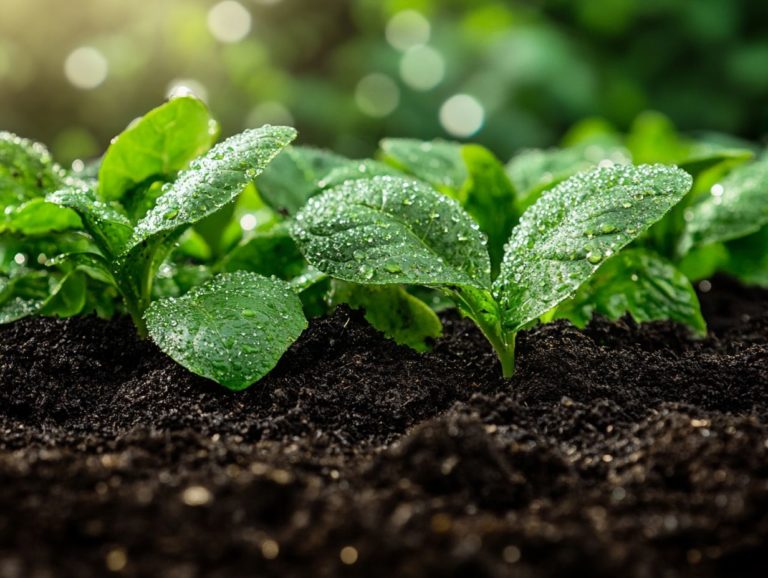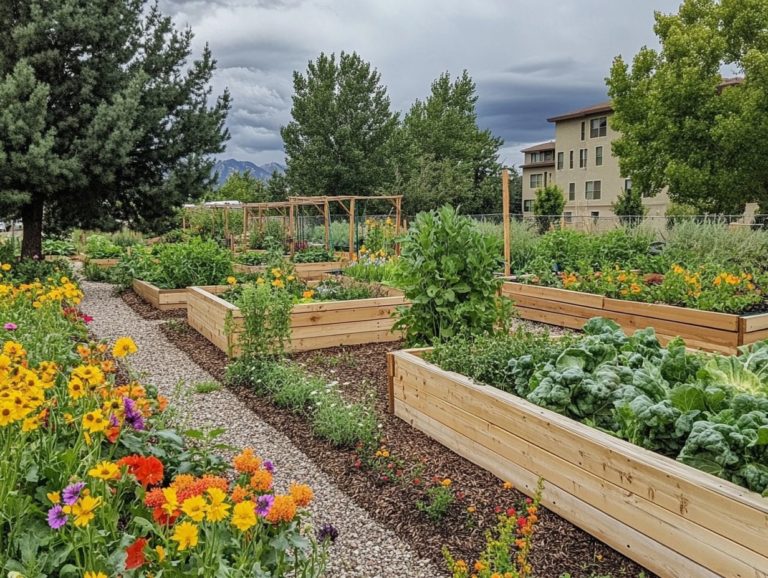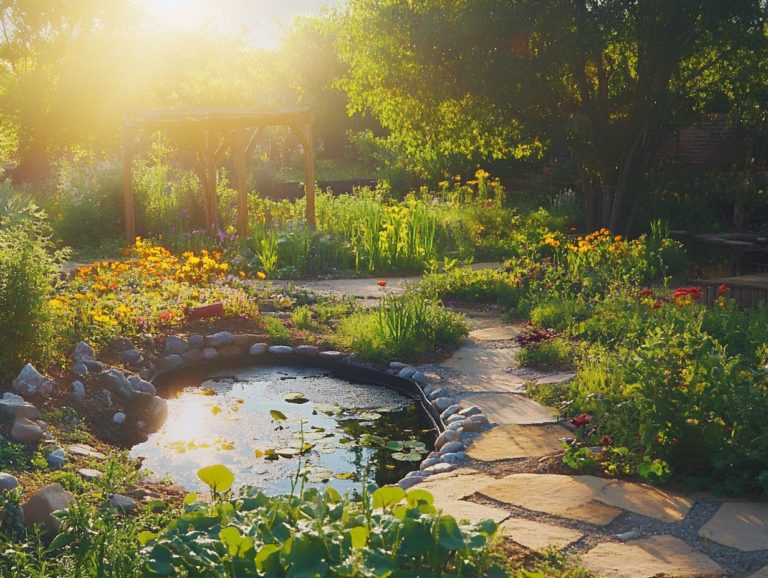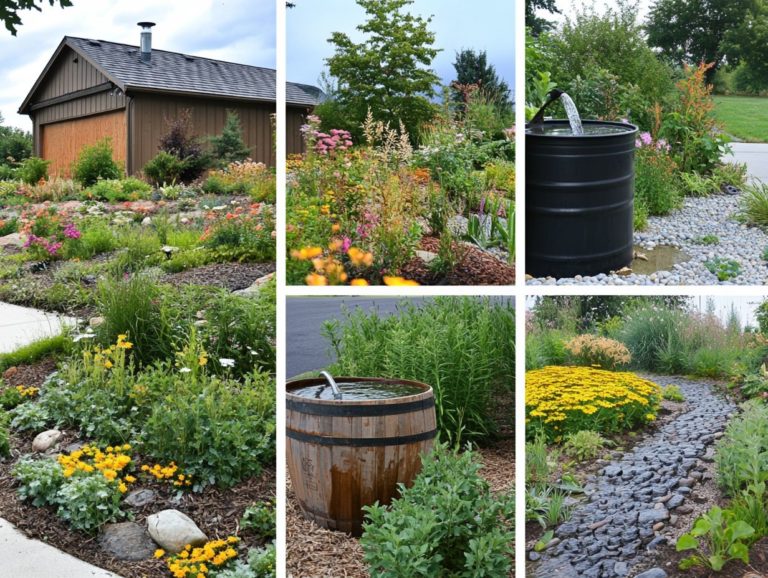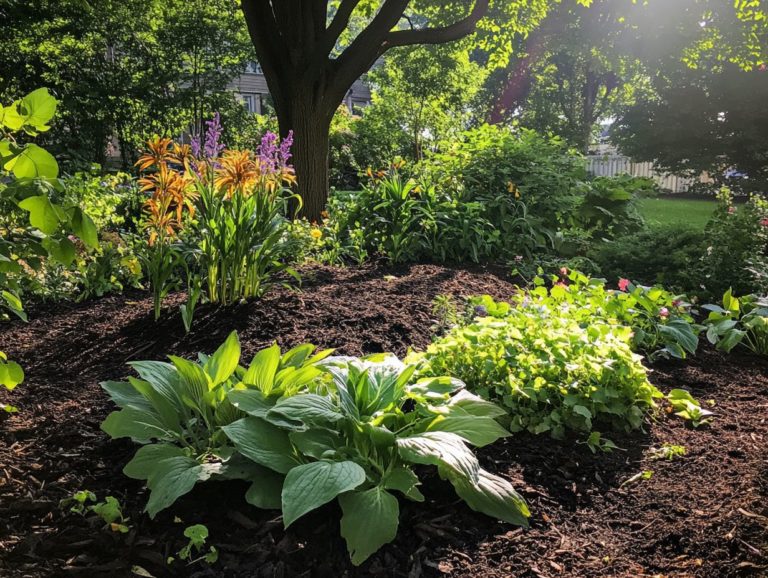Understanding the Role of Plants in Water Cycle
Water is essential for life, and the water cycle is key to maintaining the balance of our ecosystems.
This exploration delves into the intricacies of the water cycle, highlighting how plants play a vital role in this essential process. From the transpiration of towering trees to the contributions of aquatic flora, you ll discover the diverse types of vegetation involved and how human activities impact both these plants and water availability.
Conservation efforts protect water resources and sustain healthy ecosystems. Join us to uncover the fascinating relationship between plants and the water cycle.
Contents
- Key Takeaways:
- The Water Cycle: An Overview
- The Role of Plants in the Water Cycle
- Types of Plants Involved in the Water Cycle
- Effects of Human Activity on Plants and the Water Cycle
- Ways to Protect Plants and the Water Cycle
- Frequently Asked Questions
- What is the role of plants in the water cycle?
- How do plants contribute to the overall water cycle?
- Can plants help to regulate the water cycle?
- Do plants have an impact on water quality?
- How do deforestation and urbanization affect the role of plants in the water cycle?
- Why is it important to understand the role of plants in the water cycle?
Key Takeaways:
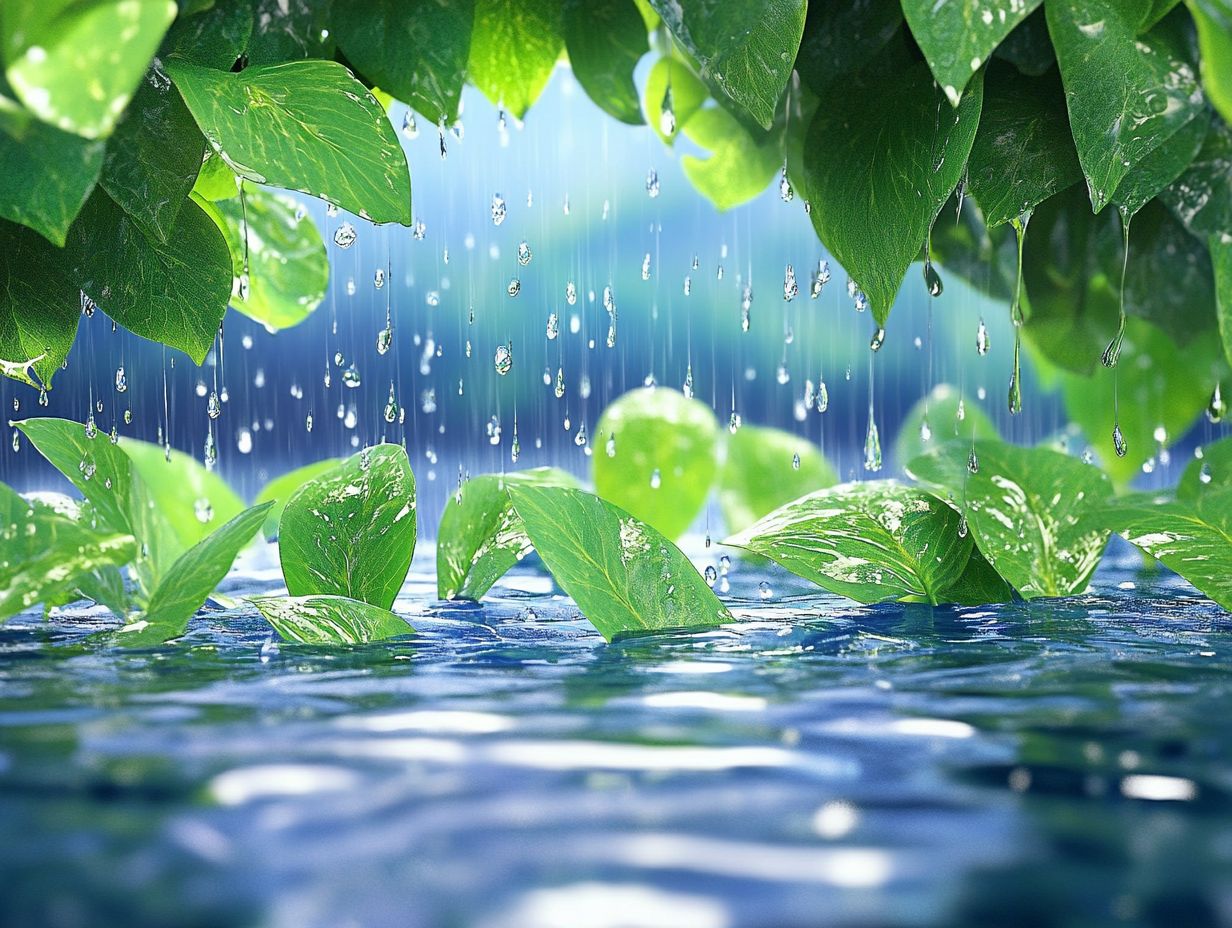
- Trees play a crucial role in the water cycle by absorbing and releasing water through transpiration, contributing to precipitation and maintaining water balance in the environment.
- Both aquatic and terrestrial plants are involved in the water cycle, with each type having unique adaptations to their respective environments.
- Human activity can negatively impact plants and the water cycle, emphasizing the need for conservation and sustainable practices to protect these vital components of our ecosystem.
The Water Cycle: An Overview
The water cycle is an essential process within ecosystems, showcasing the continuous movement of water as it transitions through various states from vapor in the atmosphere to liquid in bodies of water and back again. This dynamic cycle is pivotal in regulating climate factors, facilitating effective rainfall, and ensuring the overall health of the environment.
It encompasses a multitude of interactions among the atmosphere, land, and living organisms, particularly plants. These plants play a crucial role in maintaining ecological balance and mitigating soil erosion, making their presence essential for a thriving ecosystem.
What is the Water Cycle?
The water cycle is a fascinating journey, reflecting the continuous movement of water within the Earth and its atmosphere. It includes essential processes such as evaporation, condensation, and precipitation.
This vital cycle begins with evaporation, where water from oceans, rivers, and lakes transforms into vapor due to the warmth of the sun. The vapor ascends into the atmosphere, cools down, and condenses into tiny droplets forming clouds. As these droplets merge and become heavier, they return to the Earth as precipitation, manifesting in various forms like rain, snow, or sleet.
Once the water reaches the ground, it nourishes plants, replenishes aquifers which are underground layers that hold water or flows back into water bodies, effectively completing the cycle. Understanding these transitions is critical, as they not only sustain ecosystems but also influence climate change and weather patterns, leaving a significant impact on our environment.
The Role of Plants in the Water Cycle
Plants are essential players in the water cycle, engaging in a process called evapotranspiration, which is the process where plants release water vapor into the air. This process does more than just release water; it also enables the uptake of carbon dioxide and the production of oxygen.
This intricate interaction is vital for the health of ecosystems, as it allows plants to effectively manage their water needs while promoting the sustainability of our natural environment.
To learn more about conservation efforts and how you can help, please explore our resources.
How Plants Contribute to the Water Cycle
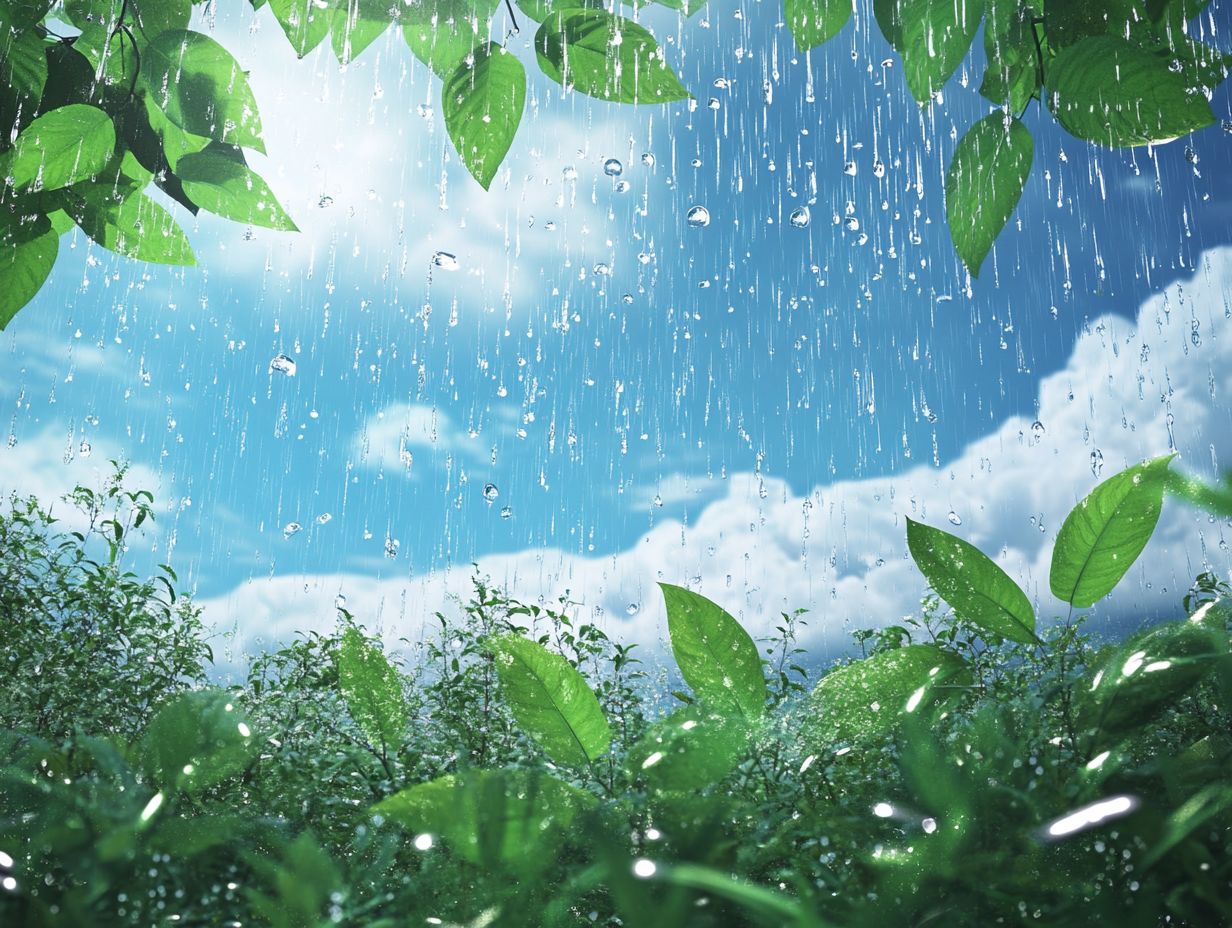
Water moves from the soil into the atmosphere. This process is called evapotranspiration. It not only aids in oxygen production but also helps reduce your carbon footprint.
This interaction has a profound impact on local humidity levels. It also plays a crucial role in regulating regional climates by maintaining moisture in the air.
The variety of plants involved from majestic trees to delicate shrubs each have unique contributions to this vital process. For example, forests with their dense canopies release significant amounts of water vapor, effectively lowering temperatures and creating a more humid environment.
Diverse plant species enhance ecosystem strength, ensuring that the process of water moving into the air from the soil and plants continues to function effectively, even as climate conditions shift. By nurturing this natural balance, they support various forms of life while mitigating the effects of extreme weather patterns.
Types of Plants Involved in the Water Cycle
Various types of plants play unique roles in the water cycle, from the vibrant aquatic plants flourishing in wetlands to the majestic mature trees standing tall in forests. Each species contributes in its own way to the intricate dance of ecosystems.
Aquatic plants are essential guardians of water quality, filtering and purifying as they thrive. Meanwhile, mature trees offer a canopy of shade, regulating soil moisture levels and influencing transpiration rates.
Your understanding of these dynamics can deepen your appreciation for the delicate balance of nature.
From Aquatic to Terrestrial Plants
Aquatic plants, like reeds and water lilies, are essential for water retention and filtration. Terrestrial plants, including grasses and trees, play a vital role in soil stabilization and nutrient cycling.
Aquatic plants absorb excess nutrients from the water and serve as habitats for various aquatic organisms. In contrast, terrestrial plants facilitate transpiration, releasing moisture back into the atmosphere and influencing local weather patterns.
The synergy between these plants enhances the overall health of the ecosystem, allowing for more effective circulation of nutrients and water. Together, they strengthen resilience against environmental changes, ensuring that both land and water ecosystems flourish and sustain a rich diversity of life forms.
Effects of Human Activity on Plants and the Water Cycle
Your actions matter! Deforestation and unsustainable irrigation practices can drastically harm plant life and disrupt the water cycle. This can lead to heightened soil erosion and altered climatic conditions that disrupt natural ecosystems.
You may notice a decline in vegetation density, which directly impacts water retention and the delicate balance of the ecosystem.
Impacts on Plant Growth and Water Availability
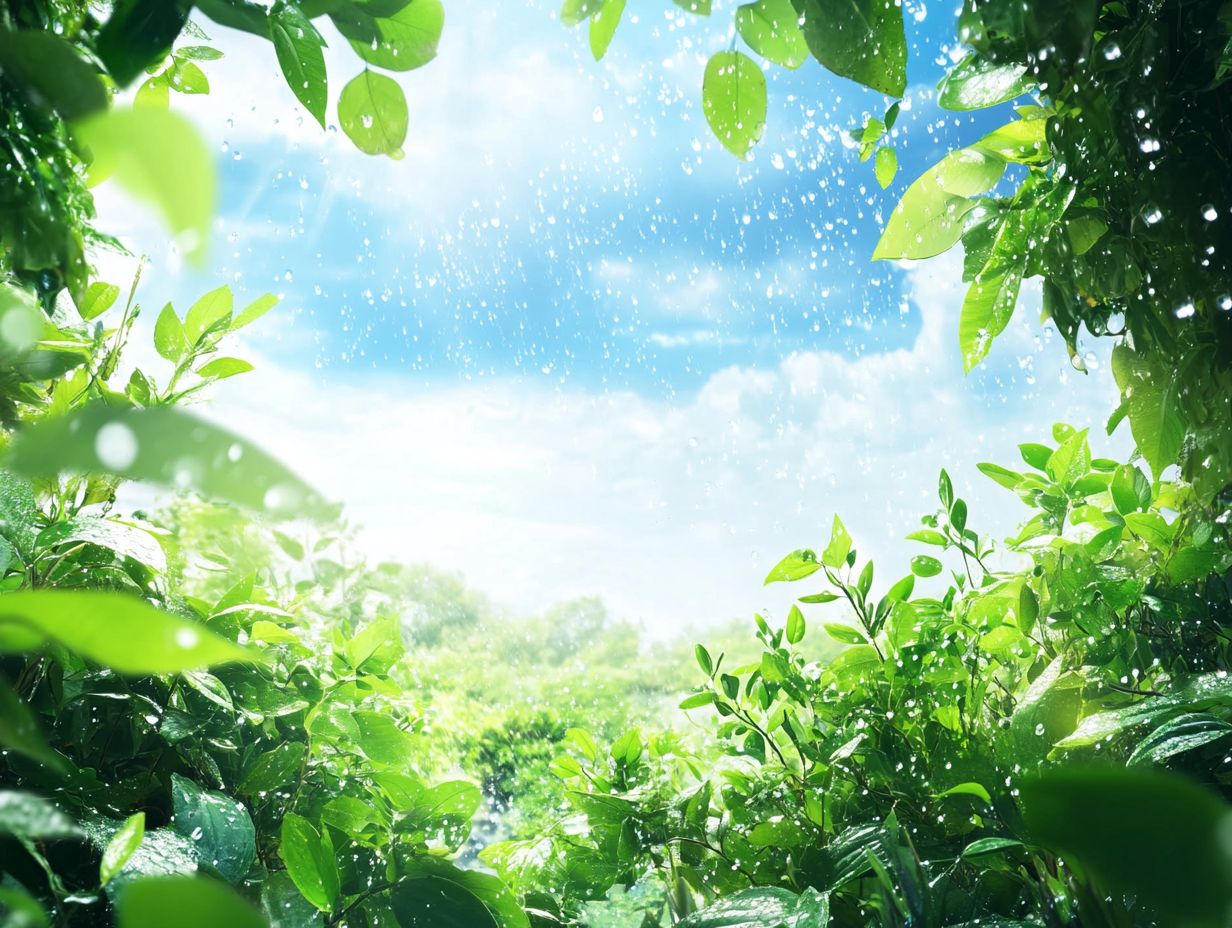
The impacts on plant growth and water availability are often worsened by human-induced factors, such as deforestation and soil erosion, which can lead to diminished soil health and reduced water retention capacity.
For instance, research indicates that regions subjected to extensive logging experience significant declines in biodiversity. This doesn t just affect plant life but also the ecosystems that rely on these plants for survival.
In areas like the Amazon rainforest, you can see how deforestation has led to altered rainfall patterns, subsequently impacting both plant growth and agricultural productivity.
A case study from parts of East Africa illustrates how overgrazing has removed protective vegetation, resulting in increased soil erosion and desertification.
These examples reveal a troubling cycle where human activities disrupt the natural balance, complicating the relationship between available water resources and the health of vegetation.
Ways to Protect Plants and the Water Cycle
To protect plants and the water cycle, you must embrace sustainable practices and conservation efforts that prioritize ecosystem health and reduce your carbon footprint. Your commitment can make a huge difference!
Focus on enhancing soil quality and promoting vegetation density to create a thriving environment that supports both flora and fauna.
These principles play an important part in safeguarding our natural resources for future generations.
Conservation and Sustainable Practices
Conservation and sustainable practices are crucial for preserving the water cycle’s integrity and improving the health of diverse plant species within ecosystems.
By taking deliberate actions, such as reducing the use of chemical fertilizers which can lead to soil degradation and water pollution you can significantly impact local biodiversity.
Implementing effective rainfall management techniques, including rainwater harvesting and sustainable irrigation practices, is equally important for maintaining water quality and availability.
Creating protected areas offers safe spaces for vulnerable plant species, allowing them to grow without the threats of development or pollution.
These strategies not only strengthen ecosystems but also increase resilience against climate change, benefiting both flora and fauna for generations to come.
Frequently Asked Questions
What is the role of plants in the water cycle?
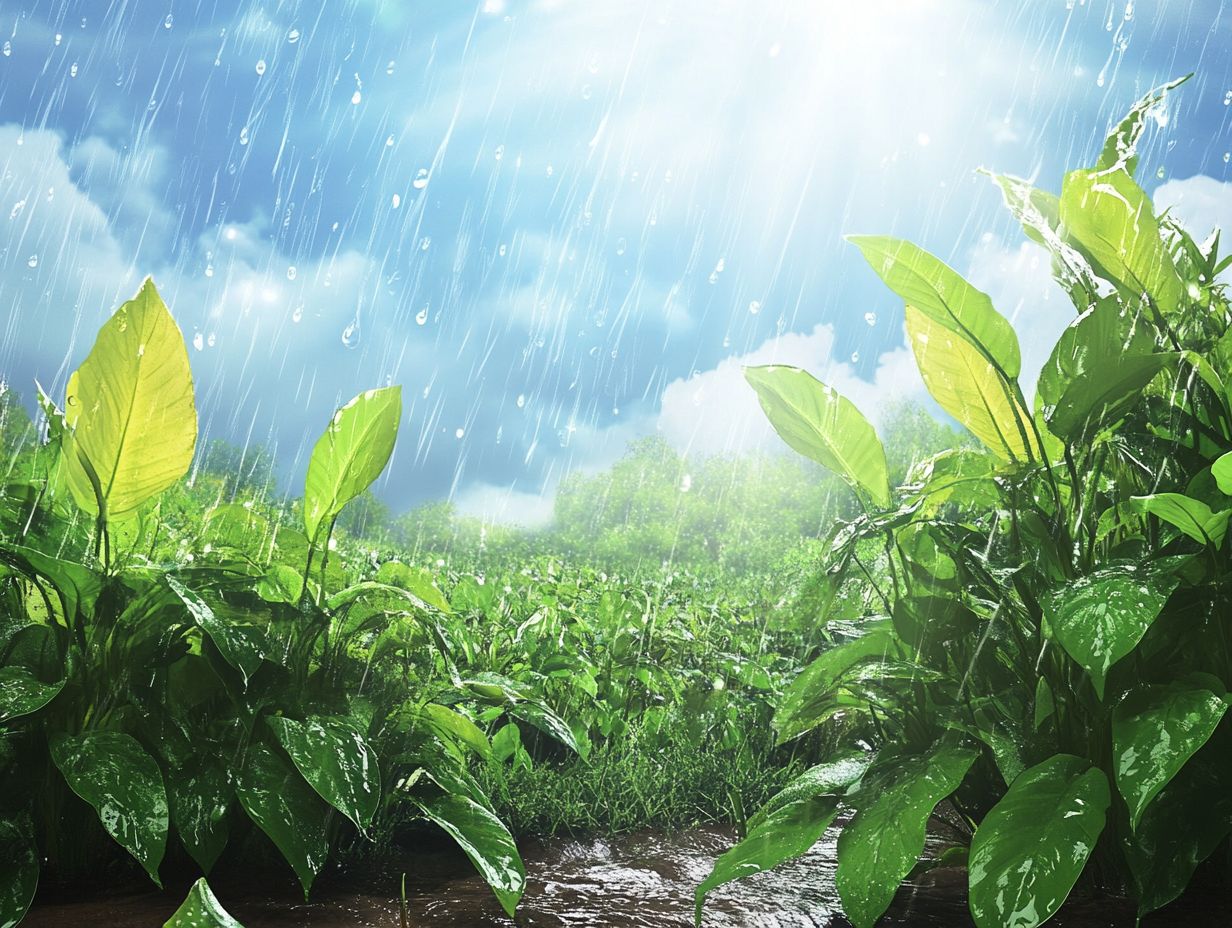
Plants play an important part in the water cycle by absorbing water through their roots and releasing it into the atmosphere through a process called transpiration, which is when plants lose water vapor.
How do plants contribute to the overall water cycle?
Plants also release water vapor into the air through a process called evapotranspiration. This process combines transpiration and evaporation from the soil, contributing to cloud formation and precipitation.
Can plants help to regulate the water cycle?
Yes, plants can regulate the water cycle by absorbing excess water during heavy rainfall and releasing it through transpiration during droughts.
Do plants have an impact on water quality?
Absolutely! Plants act as natural filters, improving water quality by absorbing pollutants and excess nutrients from the soil and water.
How do deforestation and urbanization affect the role of plants in the water cycle?
Deforestation and urbanization can harm the water cycle by reducing the number of plants that can absorb and release water. This can lead to water shortages and soil erosion.
Why is it important to understand the role of plants in the water cycle?
Understanding the role of plants in the water cycle in permaculture is vital for maintaining a healthy and balanced ecosystem and ensuring a sustainable supply of clean water for both humans and wildlife.
Take action! Consider implementing these sustainable practices in your daily life to help protect our plants and water resources.

